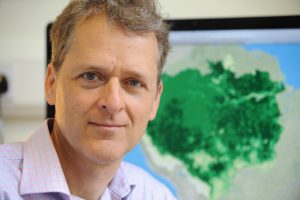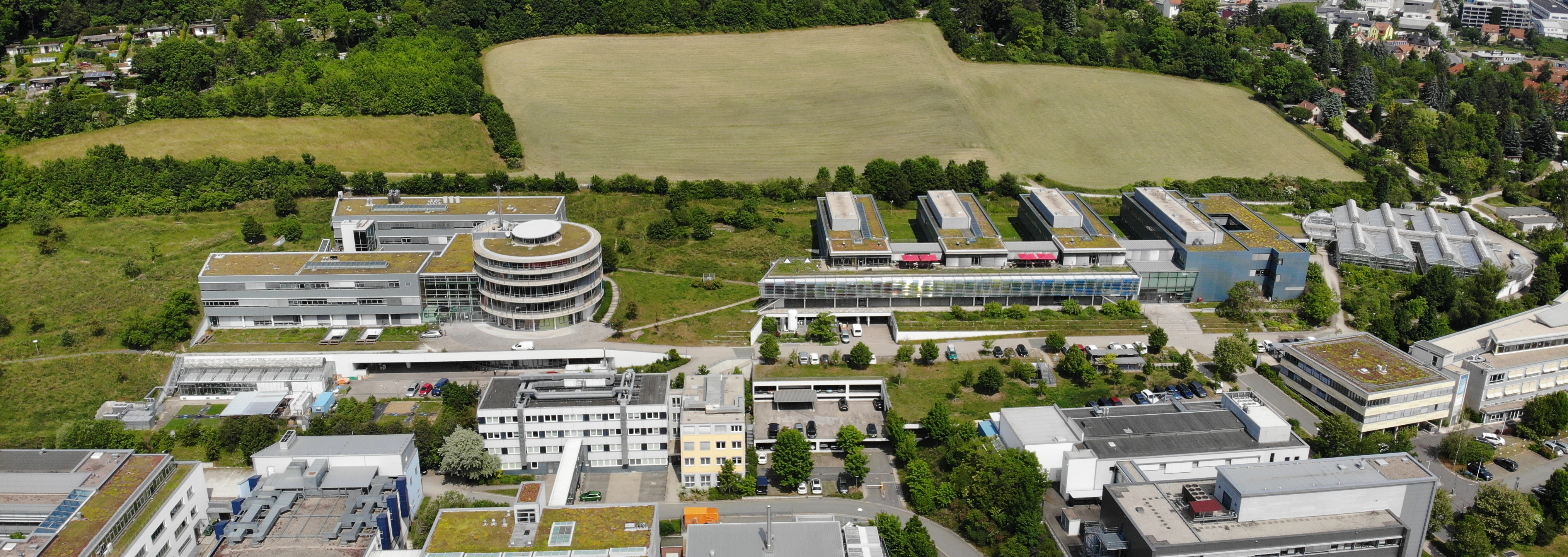
KEYNOTE
From leaf to globe: understanding biosphere C cycling with observations and models
3rd June 2022 | 10:05 am – 10.35 am
Hans-Knöll-Straße 10, 07745 Jena, Germany
BGC Lecture Hall
Zoom: will be provided
Session 3 – From leaf to globe: understanding biosphere-atmosphere interactions with observations (Markus Reichstein, moderator)
3rd June 2022 | 10.00 am – 12.30 pm
Abstract
Life in the biosphere is intimately connected to the global carbon cycle. In fact, the activity of living things is clearly visible in the annual cycle of CO2 in atmospheric data. Photosynthesis drives the uptake of CO2 from the atmosphere. Respiration of the metabolism of plants and animals generates CO2 emissions from the biosphere. Climate variations drive spatial and temporal patterns in these fluxes of carbon, but so also does biodiversity, management by humans, and soil variation. Disturbance by fire can lead to combustion emissions too. This complexity of factors, and their variation in space and time, challenges our understanding of biosphere-atmosphere interactions and our ability to predict their future.
In developing understanding of carbon exchanges between biosphere and atmosphere, measurement advances and networks have been crucial. Scientists have made a huge effort to record exchanges of CO2 directly between biosphere and atmosphere using flux towers. The power of these measurements has been expanded by connecting these towers into networks, particularly in temperate latitudes. Within the tropics, networks of forest plots, recording the life history of thousands of stems, have allowed the tracking of C flows into and out of long-term storage as wood. These flux and stem measurements have revealed the climate sensitivity of C storage and exchanges across the globe. Satellite data have in recent decades provided complete global coverage of important states of the biosphere, such as canopy greenness, woody biomass, and even biosphere-atmosphere C exchanges. Machine learning has linked the network data and satellites to give robust global estimates of the fluxes that control biosphere-atmosphere CO2 exchanges.
To fully understand the systemic nature of C exchanges and to make predictions, we need to build and use process models of the carbon cycle. Models describe and estimate all the major flows of C between biosphere and atmosphere, and within components of the biosphere such as plants and soils. Models simulate process interactions, their climate sensitivity, and their feedbacks. However, there are major disagreements among models used to predict C cycling under future global change, particularly the exchange of carbon between land and atmosphere over coming decades. The models disagree significantly on how carbon moves through plants and soils.
Addressing this knowledge gap requires models that are consistent with and founded upon the ecological data. But linking models to data consistently is a major research challenge. New global data, particularly from satellites, and new computing methods, mean we are at an exciting time for meeting this challenge and advancing both understanding and predictions of biosphere-atmosphere CO2 exchanges. Success will depend on strong partnerships between field ecologists collecting the fundamental data on plants and soil, remote sensing scientists who can then scale these data to the globe using satellites, model developers who build the descriptions of soil-plant processes, and systems analysts who ensure models and data are consistent. Together these research teams can evaluate and improve our understanding on how carbon moves through plants and soils in response to climate, fire and management. This understanding can then underpin more reliable predictions of the C cycle across the globe and more effective, sustainable management of our natural resources.
Biography
Prof Mathew Williams leads the Global Change Ecology Lab in the School of GeoSciences at the University of Edinburgh. He was educated at the University of Oxford, and the Climatic Research Unit at UEA Norwich. He spent six years working at the Ecosystems Centre in Woods Hole, USA, moving to the University of Edinburgh in 2000. Over the past 25 years his research has focused on studying the carbon cycle of terrestrial ecosystems, including Arctic tundra, the Amazon rainforest and African savannas, and European landscapes including agriculture and forestry. This research has informed society both on how ecosystems will respond to climate change, and how ecosystem responses will change the global carbon cycle. His Lab currently focuses on combining environmental simulation models with field data and satellite observations to understand the flows of carbon, energy, and water across natural and managed landscapes. His research explores the climate sensitivity of forests and tundra, the effect of fires and harvests on forest biomass, effective monitoring of national and global greenhouse gas balances from space and tall towers, and how to optimise land management to enhance soil C storage and climate resilience. Prof Williams received the Royal Society Wolfson Merit Award in 2014. He has been a Visiting Scientist at the National Centre for Atmospheric Research, Boulder, USA. He is a member of the UK National Centre for Earth Observation and sits on Mission Advisory Groups at the European Space Agency for two of its satellite missions, BIOMASS and CHIME. Prof Williams serves on the Science Advisory Boards of both the Max Planck Institute for Biogeochemistry and the Potsdam Institute for Climate Change. He has served on the Science Board for the UK Natural Environment Research Council. He is currently serving in a part-time position as Chief Science Advisor on Environment, Natural Resources and Agriculture for the Scottish Government. His role here is to ensure the Scottish Government has the best scientific advice on the environment, to advise ministers, and to make sure that government-funded research is robust and generates high quality, timely and relevant outputs.
